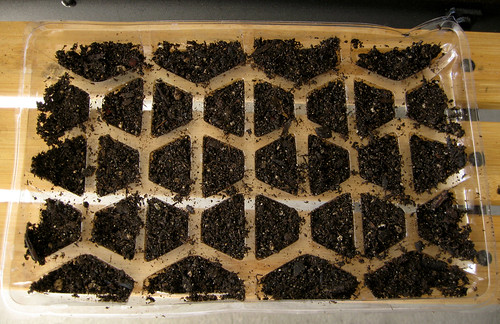A wildflower garden has a most attractive sound. One thinks of long tramps in the woods, collecting material, and then of the fun in fixing up a real for sure wild garden. Many people say they have no luck at all with such a garden. It is not a question of luck, but a question of understanding, for wild flowers are like people and each has its personality. What a plant has been accustomed to in Nature it desires always.
Photo: Martin_Heigan
In fact, when removed from its own sort of living conditions, it sickens and dies. That is enough to tell us that we should copy Nature herself. Suppose you are hunting wildflowers. As you choose certain flowers from the woods, notice the soil they are in, the place, conditions, the surroundings, and the neighbours. Suppose you find dog-tooth violets and wind-flowers growing near together. Then place them so in your own new garden. Suppose you find a certain violet enjoying an open situation; then it should always have the same.
You see the point, do you not? If you wish wild flowers to grow in a tame garden make them feel at home. Cheat them into almost believing that they are still in their native haunts. Wildflowers ought to be transplanted after blossoming time is over. Take a trowel and a basket into the woods with you. As you take up a few, a columbine, or a hepatica, be sure to take with the roots some of the plant's own soil, which must be packed about it when replanted. The bed into which these plants are to go should be prepared carefully before this trip of yours.
Surely you do not wish to bring those plants back to wait over a day or night before planting. They should go into new quarters at once. The bed needs soil from the woods, deep and rich and full of leaf mold. The under drainage system should be excellent. Then plants are not to go into water-logged ground. Some people think that all wood plants should have a soil saturated with water. But the woods themselves are not water-logged. It may be that you will need to dig your garden up very deeply and put some stone in the bottom.
Photo: jeremy!
Over this the top soil should go. And on top, where the top soil once was, put a new layer of the rich soil you brought from the woods. Before planting water the soil well. Then as you make places for the plants put into each hole some of the soil which belongs to the plant which is to be put there. I think it would be a rather nice plan to have a wild-flower garden giving a succession of bloom from early spring to late fall; so let us start off with March, the hepatica, spring beauty and saxifrage. Then comes April bearing in its arms the beautiful columbine, the tiny bluets and wild geranium.
For May there are the dog-tooth violet and the wood anemone, false Solomon's seal, Jack-in-the-pulpit, wake robin, bloodroot and violets. June will give the bellflower, mullein, bee balm and foxglove. I would choose the gay butterfly weed for July. Let turtle head, aster, Joe Pye weed, and Queen Anne's lace make the rest of the season brilliant until frost. Let us have a bit about the likes and dislikes of these plants. After you are once started you'll keep on adding to this wild-flower list.
Growing Wildflower in Your Garden
1:32 AM
ThanateTan







